The distribution of manta rays in the western North Atlantic Ocean off the eastern United States
April 2022
Nicholas A. Farmer, Lance P. Garrison, Calusa Horn, Margaret Miller, Timothy Gowan, Robert D. Kenney, Michelle Vukovich, Julia Robinson Willmott, Jessica Pate, D. Harry Webb, Timothy J. Mullican, Joshua D. Stewart, Kim Bassos-Hull, Christian Jones, Delaney Adams, Nicole A. Pelletier, Jordan Waldron & Stephen Kajiura
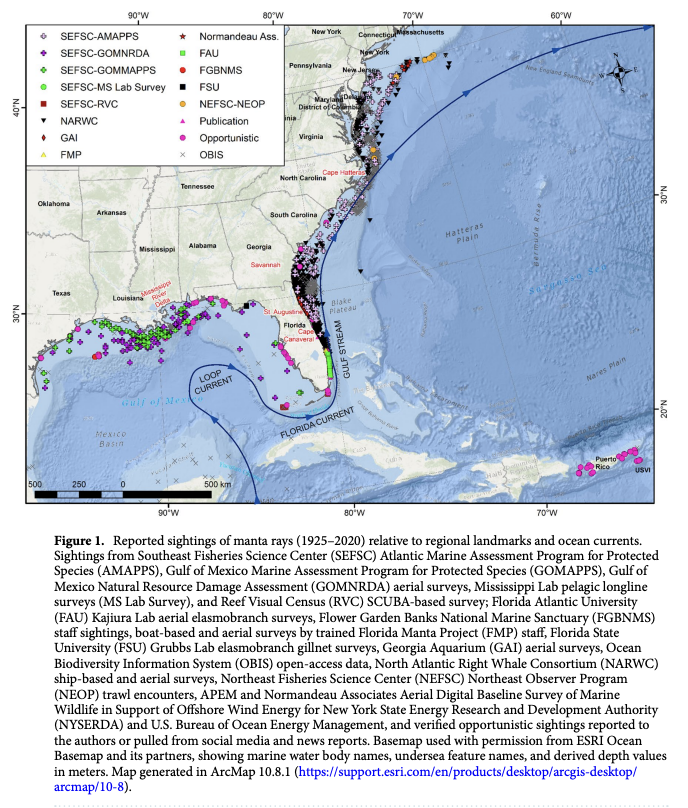
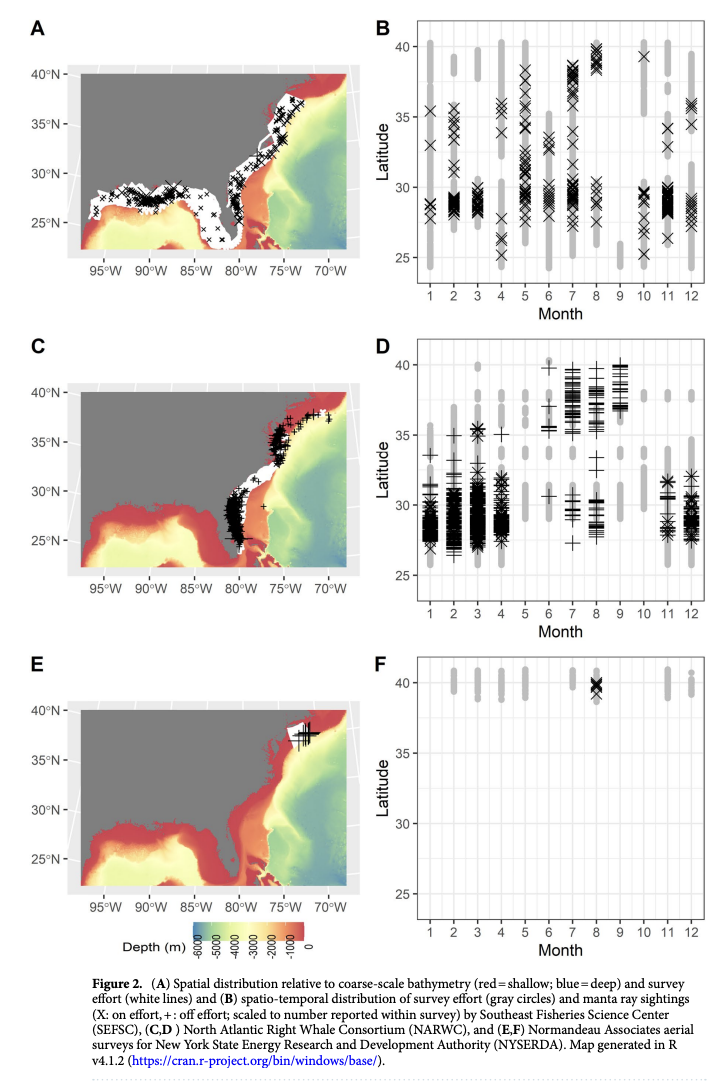
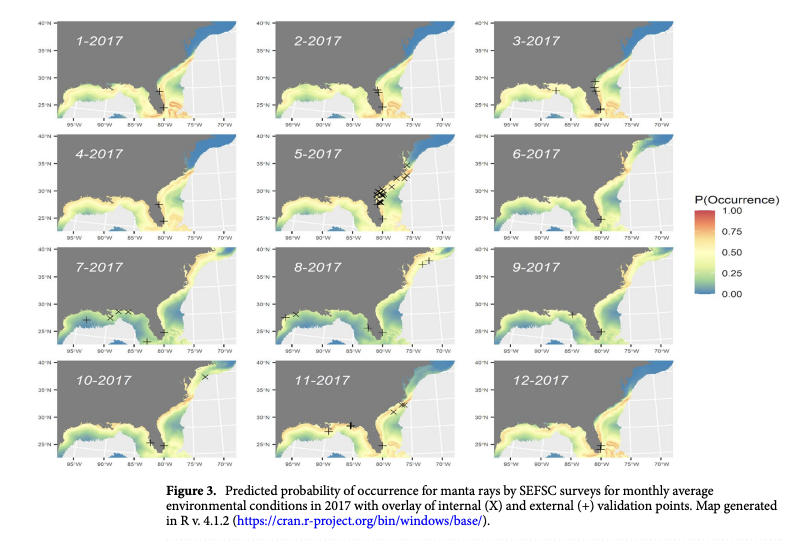

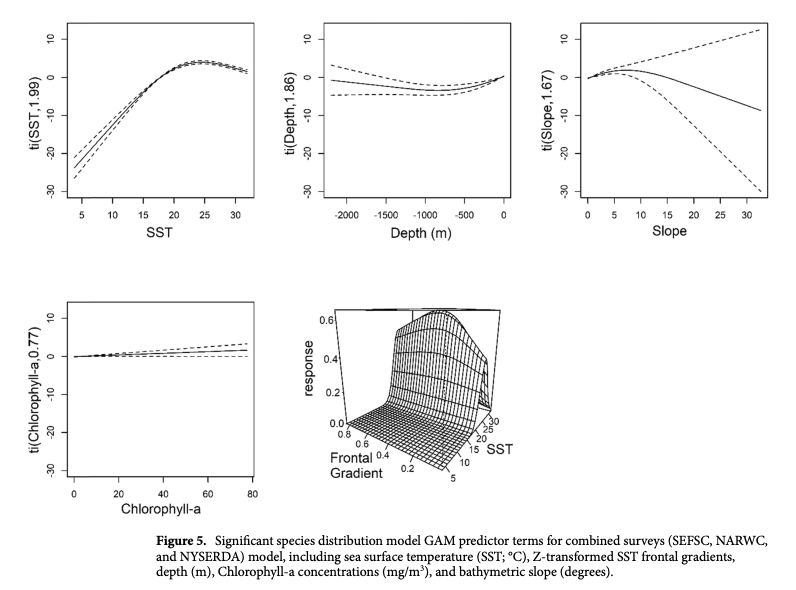
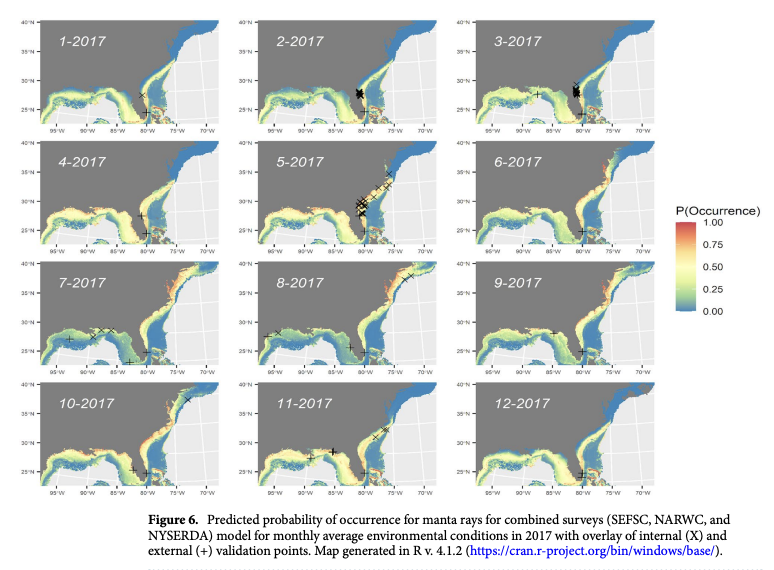
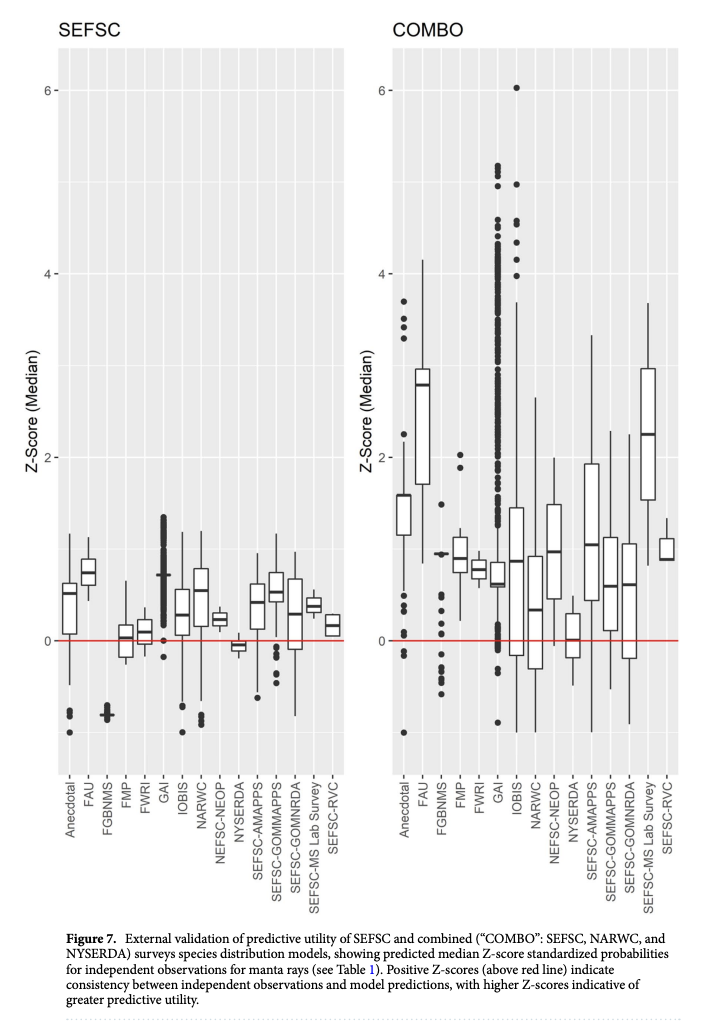
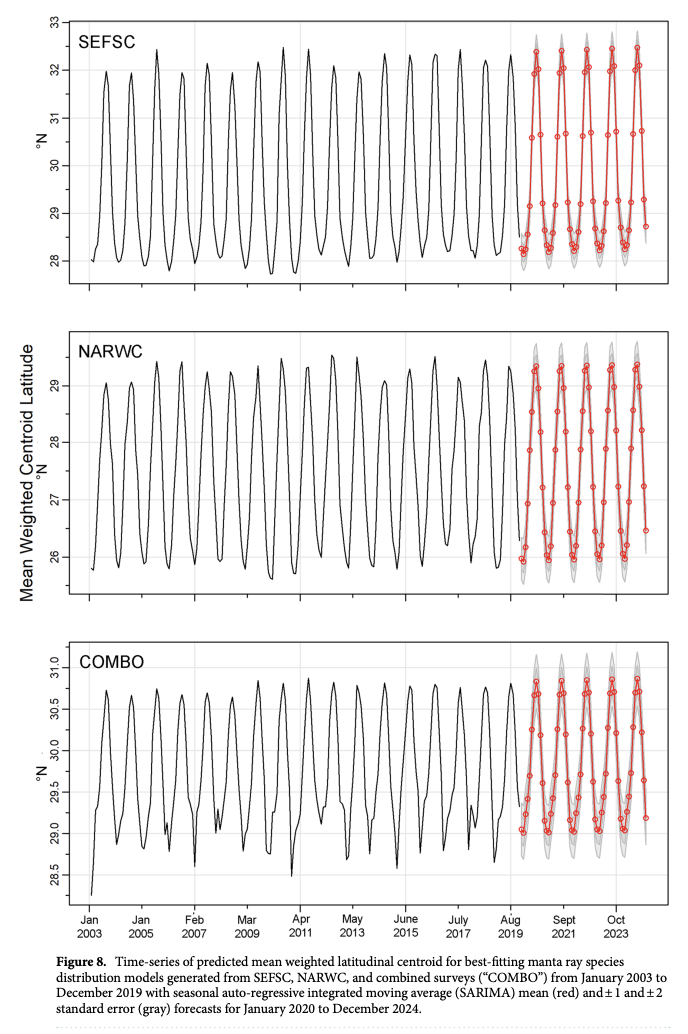
Summary: The oceanic manta ray, listed as threatened under the U.S. Endangered Species Act, was studied to evaluate its distribution off the eastern United States and the Gulf of Mexico. The research integrated decades of data from various sources using species distribution modeling (SDM). Manta rays were most frequently found in productive nearshore and shelf-edge upwelling zones at thermal frontal boundaries, within a temperature range of 20-30°C. SDM predictions aid in resource management for protecting manta rays from threats such as fisheries bycatch, boat strikes, and pollutants.
Abstract
“In 2018, the giant manta ray was listed as threatened under the U.S. Endangered Species Act. We integrated decades of sightings and survey effort data from multiple sources in a comprehensive species distribution modeling (SDM) framework to evaluate the distribution of giant manta rays off the eastern United States, including the Gulf of Mexico. Manta rays were most commonly detected at productive nearshore and shelf-edge upwelling zones at surface thermal frontal boundaries within a temperature range of approximately 20–30 °C. SDMs predicted highest nearshore occurrence off northeastern Florida during April, with the distribution extending northward along the shelf-edge as temperatures warm, leading to higher occurrences north of Cape Hatteras, North Carolina from June to October, and then south of Savannah, Georgia from November to March as temperatures cool. In the Gulf of Mexico, the highest nearshore occurrence was predicted around the Mississippi River delta from April to June and again from October to November. SDM predictions will allow resource managers to more effectively protect manta rays from fisheries bycatch, boat strikes, oil and gas activities, contaminants and pollutants, and other threats.”
Author Affiliations
NOAA/National Marine Fisheries Service, Southeast Regional Office
NOAA/National Marine Fisheries Service, Southeast Fisheries Science Center
NOAA/National Marine Fisheries Service, Office of Protected Resources
Florida Fish and Wildlife Research Institute
Graduate School of Oceanography, University of Rhode Island
Normandeau Associates Inc.
Marine Megafauna Foundation
Georgia Aquarium
The Manta Trust
NOAA/National Marine Fisheries Service, Southwest Fisheries Science Center
Sharks and Rays Conservation Research Program
Western Washington University
Florida Atlantic University
Funded by
Colgan Foundation
Disney Conservation Fund
Kansas City Zoo
Brevard Zoo
National Marine Fisheries Service
Minerals Management Service
U.S. Department of Commerce
National Oceanic and Atmospheric Administration (NOAA)
